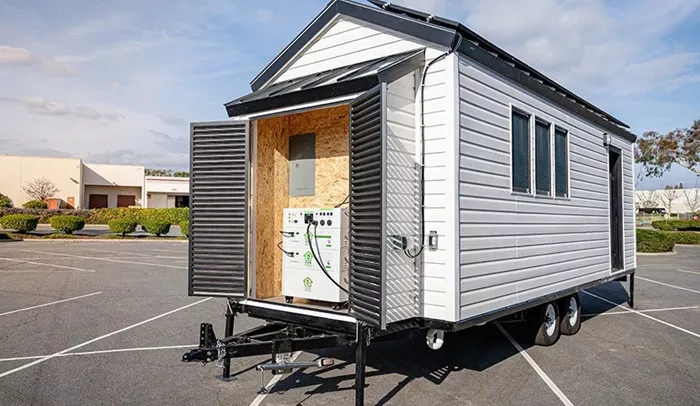A backup generator is an essential appliance for maintaining power during outages. Whether due to storms, grid failures, or other emergencies, having a reliable generator ensures your home stays powered. However, improper use can lead to safety hazards or damage to your electrical system. This guide covers everything you need to know about selecting, installing, and safely operating a home backup generator.
Types of Home Backup Generators
Before using a generator, you must choose the right type for your needs. The two main categories are portable generators and standby generators.
Portable Generators
Portable generators are smaller, movable units that run on gasoline, propane, or diesel. They are ideal for short-term power needs and can supply electricity to essential appliances like refrigerators, lights, and fans.
Pros
- Lower upfront cost
- Easy to move and store
- Suitable for occasional use
Cons
- Manual startup required
- Limited power output (usually 3,000–8,500 watts)
- Requires fuel storage and refilling
Standby Generators
Standby generators are permanently installed outside the home and automatically turn on during a power outage. They connect directly to your home’s electrical system and run on natural gas or propane.
Pros
- Automatic operation
- Higher power capacity (7,500–20,000 watts or more)
- No need for manual refueling (if connected to a gas line)
Cons
- Higher installation and maintenance costs
- Requires professional setup
- Choosing the Right Generator Size
Selecting the correct generator size is crucial. An undersized generator may overload and fail, while an oversized one wastes fuel.
Calculating Your Power Needs
- List essential appliances (e.g., refrigerator, lights, sump pump, HVAC).
- Check wattage ratings (found on appliance labels or manuals).
- Add up starting (surge) and running watts—some devices, like motors, need extra power at startup.
Example Calculation
- Refrigerator: 800W running, 1,200W starting
- Lights: 200W total
- Sump pump: 1,000W running, 2,000W starting
- Total running watts: 2,000W
- Total starting watts: 3,200W
A 3,500W generator would handle this load safely.
Safe Installation & Placement
Portable Generator Placement
Outdoors only : Never run a generator indoors (risk of carbon monoxide poisoning).
Dry, level surface : Avoid wet or uneven ground.
At least 20 feet from windows/doors : Prevents exhaust fumes from entering the home.
Standby Generator Installation
Professional installation required : Must be wired into the home’s electrical panel.
Proper ventilation : Ensure adequate airflow around the unit.
Local code compliance : Permits may be required.
Connecting the Generator to Your Home
Extension Cords (For Portable Generators)
- Use heavy-duty, outdoor-rated cords with sufficient wattage capacity.
- Plug appliances directly into the generator.
- Avoid daisy-chaining multiple cords.
Transfer Switch (Recommended)
A transfer switch safely connects the generator to your home’s electrical system. There are two types:
- Manual Transfer Switch – Requires you to switch circuits manually.
- Automatic Transfer Switch (ATS) – Used with standby generators; switches power automatically.
Why a Transfer Switch is Important
- Prevents backfeeding (dangerous power flow back into utility lines).
- Protects your generator and appliances.
- Starting and Running the Generator
Portable Generator Steps
Check fuel and oil levels :Never run the generator dry.
Turn off all connected appliances : Prevents power surges.
Start the generator : Follow manufacturer instructions (pull cord or electric start).
Plug in devices one by one : Avoid overloading.
Standby Generator Operation
- Starts automatically when power fails.
- Runs self-tests periodically to ensure readiness.
Maintenance Tips for Longevity
Regular Oil Changes : Every 50-100 hours of use (check manual).
Fuel Stabilizer : Prevents fuel degradation in portable generators.
Battery Check (Standby Models) : Ensure the battery is charged.
Air Filter Cleaning : Replace or clean as needed.
Test Runs : Run the generator monthly for 10-15 minutes.
Safety Precautions
Never overload the generator : Follow wattage limits.
Use carbon monoxide detectors : Critical if running near the home.
Avoid wet conditions : Risk of electric shock.
Store fuel safely : Keep gasoline in approved containers away from living areas.
Conclusion
A backup generator is a valuable investment for uninterrupted power. By selecting the right type, sizing it correctly, and following safety guidelines, you can ensure reliable operation during outages. Always prioritize safety by using proper connections, maintaining the generator, and keeping it in a well-ventilated area. With proper care, your generator will serve you well for years.
By understanding these key points, homeowners can confidently use backup generators without risking their safety or damaging their electrical systems. If unsure about installation or operation, consult a licensed electrician for professional assistance.

